Is South America an amazing continent to travel on a budget? YES!
But is every country super cheap? Hmm… not exactly.
As I experienced while backpacking through South America, not everywhere is amazingly budget-friendly. However, if you plan your route well you can certainly benefit from low cost of travel as well as favorable exchange rates against Western currencies.
While I’m European, I’ll use mainly US Dollars here for convenience. Any local prices in this article are automatically converted to USD/EUR based on today’s exchange rate.
On May 28, 2025, 1 USD is the same as:
0.89 EUR — 0.74 GBP — 1.38 CAD — 1.56 AUD
What are the cheapest countries in South America?
Some of the least expensive countries in South America are Peru, Ecuador, and Bolivia. If you are on a tight budget, go here!
Do keep in mind organized tours to major attractions (e.g. the Inca Trail trek to Machu Picchu or a Galapagos Islands cruise) can still add up to a lot of expense, however the day-to-day costs in these countries are relatively low.
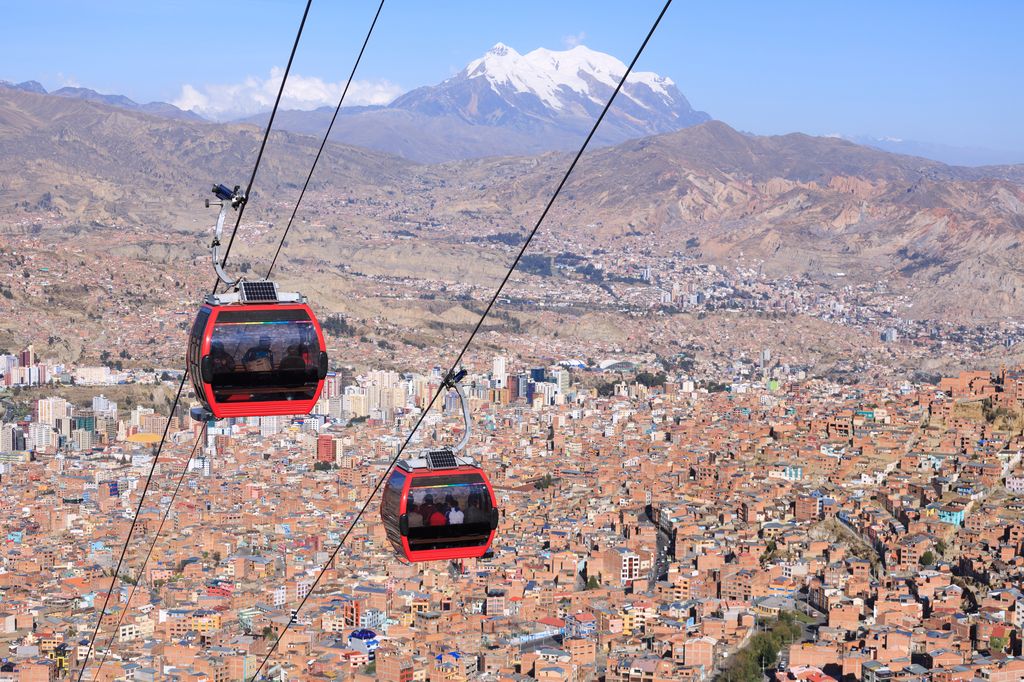
What are some expensive countries?
Watch out for very high costs in Chile. Travel can also get pretty expensive in Brazil, though it depend on whether you hit up the big cities or go to the countryside. Currency fluctuations also have a major impact; Brazil is cheaper now in 2025 than it used to be.
Be aware of Argentina. It used to be very inexpensive for foreigners but it’s undergoing major economic reforms that make it a lot pricier nowadays. It’s still pretty good value compared to, say, Western Europe, but it’s not the legendarily budget-friendly place (for foreign travellers bringing hard currency) that it once was. Make sure you budget appropriately.
How much should you budget on average?
The annoying answer is… it depends!
It makes a huge difference whether or not you’ll be traveling in backpacker or budget style. This means traveling primarily overland, eating mostly the local cuisine, staying in hostels, guesthouses or budget hotels, and booking day tours mostly from local providers instead of online platforms. Doing all this can bring down your costs a lot.
A good rule of thumb is you’ll need about $1200-$1300 a month for traveling on a budget in South America (for one person). If you hit up only the less expensive countries like Peru or Ecuador, you can get that down to about $1000/month, give or take.
Of course, your average could get a lot lower if, say, you end up in a rural village in Bolivia to volunteer and stay in one place for a long time. Or you could spend a lot more if you splurge on flights, spend your time in the most expensive countries, or go crazy with booking special trips (Galapagos cruise, Machu Picchu trek, etc.). I’m generally trying to reflect an average situation here.
All that said, let me give you an idea of the costs in each country, based on my own trips there as well as recently updated research.
South America travel budgets
| Country | Suggested Daily Budget |
| Colombia | $35 – $50 |
| Ecuador | $30 – $40 |
| Peru | $35 – $50 |
| Bolivia | $20 – $35 |
| Argentina | $50 – $70 |
| Chile | $50 – $70 |
| Brazil | $40 – $60 |
These are ballpark figures, just for you to get an idea! This post was last revised in 2025.
Colombia
Daily backpacker budget: $35 to $50 (€31 – €44)
Travel costs in Colombia are mid-range by South American standards. It’s gotten cheaper for many travellers over the past few years, as the falling value of the peso versus currencies like the US dollar has made it more favorable.
To save costs, don’t stay in Cartagena for too long! This historic colonial city is undeniably beautiful but it’s also the most touristy and expensive. Cartagena is increasingly filled with boutique or luxury hotels and it’s a bit of a bougie destination for Colombians and foreigners alike.
Outside Cartagena, Colombia gets a lot more budget-friendly. While Colombia doesn’t have a singular “bucket list” place drawing people to it (at least not on the level of Machu Picchu or Iguazu Falls), this also prevents any overly high tour expenses. I love Colombia and consider it one of the best destinations in South America.
It’s also a lot safer than people think, with the only caveat that solo travellers (and interestingly, particularly solo men!) need to take special care in the cities particularly when dating locals. Read my safety in Colombia guide for more details.
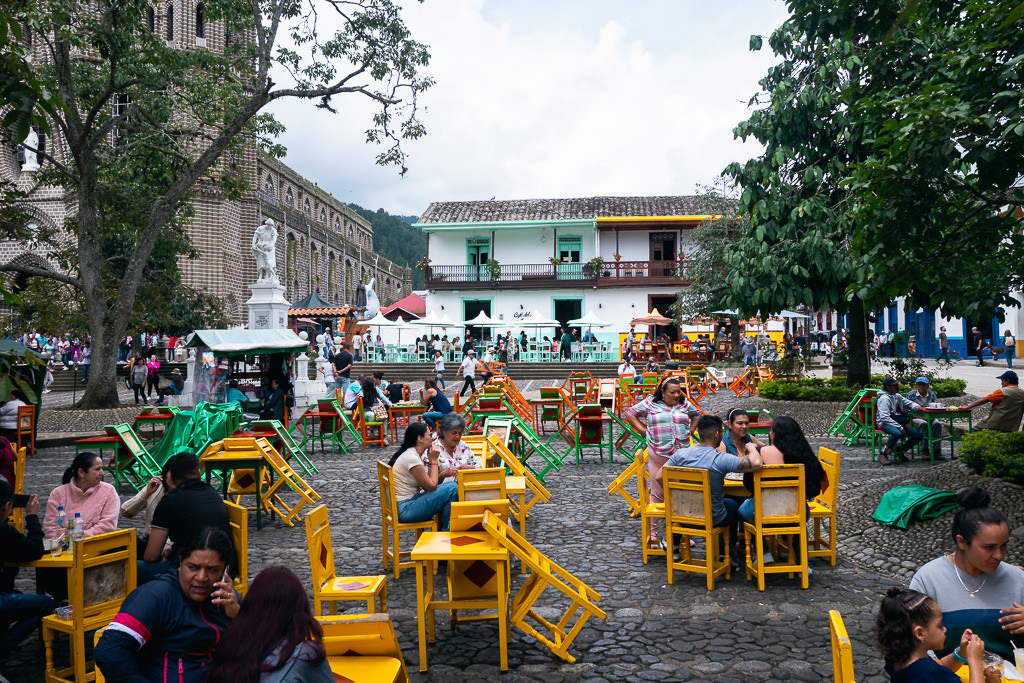
Activities are reasonably priced by Western standards. For example, a paragliding session in San Gil costs around 180,000 pesos ($44 or €39) for a short flight and 310,000 pesos ($75 or €67) for a longer one. An hour-long private salsa dancing lesson in Medellin costs around 50,000 pesos ($12 or €11). Museum entry is often free or only a couple of thousand pesos.
If you’re travelling on a budget, you can save on your food expenses by getting the menu del dia or menu executivo offered by many restaurants around lunchtime. These set meals cost about 12000 pesos (about €3 or $3) and typically include a hearty and filling soup, a main dish, and fresh fruit juice.
Colombia is twice the size of France and travel time and costs can add up if you explore every corner of it. Luckily, there are many low-cost carriers, so adding a domestic flight or two to your itinerary can save you time and include more regions.
Ecuador
Daily backpacker budget: $30 to $40 (€27 – €35) not including Galapagos
Note: Ecuador uses the US Dollar as its official currency
Ecuador is a fantastic budget-friendly destination and is widely regarded as a great introduction to South America.
Ecuador’s cost of living is fairly low. Since it’s also a relatively small and compact country, there is less of a need to spend on long-distance transportation. If you want to travel in South America on a budget and have Amazonian jungles, Andean mountains, and the Pacific coastline within (relatively) short distance of each other, then Ecuador is a perfect choice.
Activities are reasonably priced in Ecuador. As the perfect example I used to list here a round trip on the stunning Devil’s Nose train, but the train company went out of business during the pandemic and it’s unsure if/when it will reopen. As another rough indication of costs, hiking trips to volcanoes and mountains usually start at around $50 (€44), with bigger groups getting better rates.
In terms of accommodation, there are ample cheap private rooms to be found in Ecuador, and often the price difference between a dorm bed and a basic private is minimal. Basic private rooms cost between $10 and $15.
The one thing that can really tip the scale is visiting the Galapagos Islands. This highly protected nature area is best visited on an ecotourism cruise; add to this the costs of flights to- and from the islands and your budget can skyrocket. Expect to need at least $1000 per person (€885) for Galapagos, though it may end up costing more.
If you visit independently (which will offer a more limited experience), there are still costs to take into account. The Galapagos National Park entry fee is $200 for adults and $100 for children under 12, and there is an additional $20 fee for the Transit Control Card.
If you are on a multi-month trip through South America on a budget, you may wish to save the Galapagos for the future — perhaps for a dedicated holiday to Ecuador with a bigger budget — as just a short week there can cost as much as one or two months of traveling elsewhere on the mainland.
Peru
Daily backpacker budget: $35 to $50 (€31 to €44)
Peru as a country overall is very cheap. As a travel destination, it can nevertheless be a bit expensive, at least when doing the typical southern Peru itinerary.
Day-to-day costs such as food or transportation are low, though there are so many highlights in Peru that you may end up spending a lot on tours. A typical loop that includes Lima, Cusco, Machu Picchu, Nazca, Lake Titicaca, etc. will likely have you quickly hopping between various paid organized activities. Some of these, most notably Machu Picchu, have become so popular that visitor numbers have been strictly capped and prices have increased.
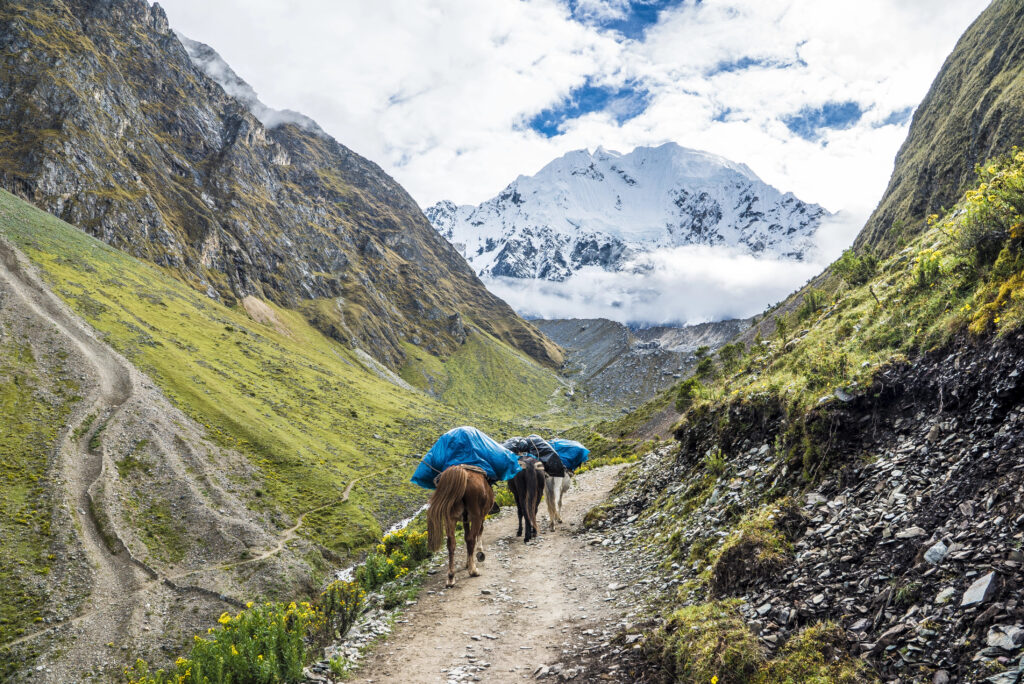
If you plan to do the Machu Picchu Inca Trail trek, it’s likely to be your biggest expense. This will set you back at least $750 (the price is almost always quoted in US dollars) if you book in Cusco and potentially a lot more if you arrange it elsewhere. It is worth bearing in mind that the pricier agencies may offer better food and a more comfortable camping experience. Still, many backpackers view $750 as being a good price for seeing one of the world’s most incredible sights on a multi-day trek. The Inca Trail trek is limited to 500 persons per day and needs to be booked well ahead of time; alternatives such as the Salkantay Trek are cheaper and/or easier to arrange.
Bus travel is not only quite affordable but the Peruvian coach buses are known for their comfort. Travelling by bus from Lima to Arequipa for instance costs around 160 soles ($44 or €$39) for a ‘full cama’ (full reclining luxury seat) and around 110 soles ($30 or €$27) for a regular 2nd class ticket.
Many of the costs in Peru will be far higher if you book online while abroad. For example, a short flight over the mysterious Nazca Lines could cost you over $250 if you book it from abroad, but ranges from around 300 soles ($82 or €$73) to 400 soles if you do so in Nazca — depending on the operator.
Despite the cost of tours, Peru makes for an incredible experience with a lot of fascinating culture within a relatively compact travel circuit. Away from the standard itinerary (such as in the north or in the Amazon), Peru is even among the cheapest areas to travel in South America.
Bolivia
Daily backpacker budget: $20 to $35 (€18 to €31)
Bolivia is the ultimate cheapie of South America. Sometimes called the ‘Tibet of South America’, this mountainous landlocked country is among the least developed, but this also makes it a real bargain for international visitors.
You’ll often find the lowest prices for accommodation and food, especially in poorer places like Potosi and Oruro. Just keep in mind Bolivia is not always the most comfortable country; cities like La Paz and Potosi are rugged and often dreary, with the threat of protest marches and blocked roads almost always present.
There are certain tourist activities that you will need to take into account. For example, a popular activity is to ride a mountain bike down the so-called ‘Death Road’ near La Paz, which costs from around 500 bolivianos ($72 or €64) to maybe 860 bolivianos ($124 or €110) depending on the company and the quality of the bikes. Some of the cheaper companies use old bikes that are probably best avoided on such a demanding and dangerous downhill ride.
A 3-day tour of the Salt Flats of Uyuni costs from roughly 700 bolivianos to maybe 850 bolivianos (approx. $125 USD), which is absolutely a steal for this incredible experience. Take a 3-day tour instead of the shorter 1- or 2-day offerings if you can, as it will be well worth it.
Overall, Bolivia is an adventurous traveler’s paradise at knock-down prices, as long as you don’t mind roughing it a little at times.
Argentina
Daily backpacker budget: $60 to $70 (€35 to €44)
Argentina has been undergoing serious economic turmoil for many years. Stability still appears frustratingly out of reach for this massive country.
Inflation has been plaguing Argentina for what seems like forever, but now it’s economic reforms that are changing the financial picture for both locals and travellers.
It used to be possible for travellers to exchange currencies like USD or EUR at highly favorable rates, but this is no longer the case. Although the so-called ‘Blue Rate’ still exists it now only gives minor benefits. In early 2025, you could get just 10% more pesos under the Blue Rate, whereas it could yield you double the official rate in the past. You can ignore outdated information regarding the Blue Rate or “dólar blue”.
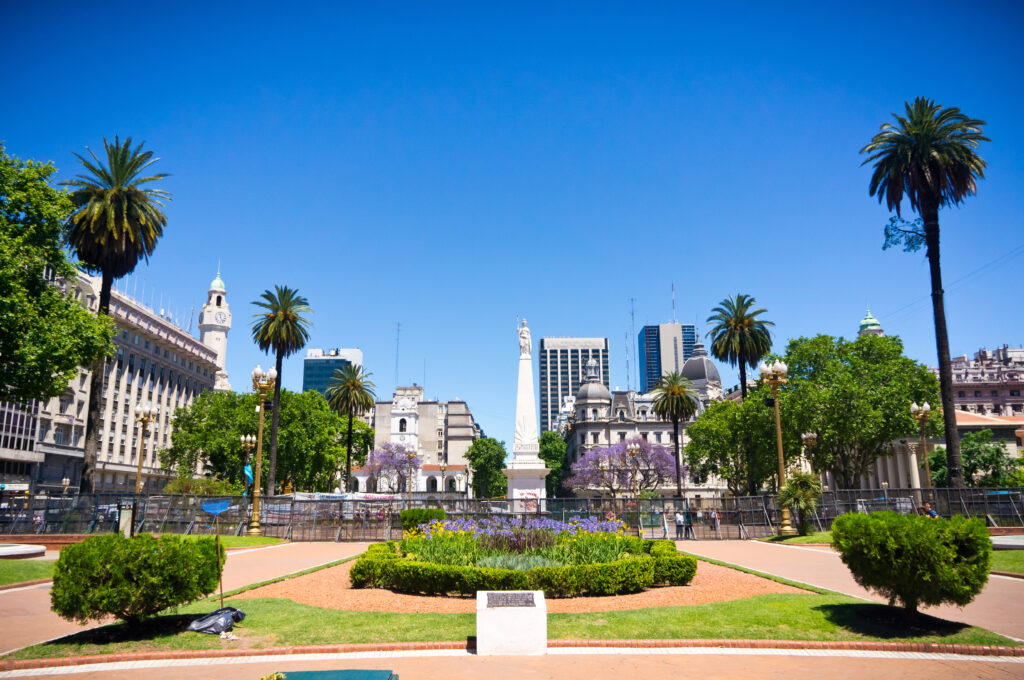
Because the situation is so changeable, I recommend checking traveller Facebook groups for Argentina to get the latest news. Try Argentina Travel Tips Facebook Group for example.
Travelling in Argentina is probably the closest that South America offers to the experience of travelling in Europe. While prices are not quite at Western European levels, they have certainly risen significantly, so the idea of getting ‘European-style travel’ at a discount no longer holds. However, it’s a magnificent country with amazing people and a must-visit in South America, so it’s well worth budgeting for.
Buenos Aires, Mendoza, and Bariloche are more expensive places to stay, as is the remote Patagonia in general. The north of Argentina and outer cities like Salta and Cordoba are cheaper. Distances in Argentina are huge and long bus rides are common, so factor this into your budget. The good news is that the long, flat roads here mean that you can choose a comfortable overnight bus and save on your hotel bill without too many worries.
Chile
Daily backpacker budget: $50 to $70 (€44 – 62) not including Easter Island
Chile is the country that most often surprises people. It’s sometimes assumed to be a developing country, yet a traveler will find that parts of it are very modern and pricy. If you are on a tight budget, this is a country where you might consider cooking your own food rather than eating out.
Transportation can be a major cost especially if going down all the way to Patagonia, in which case flying could be a tempting option. If you make it down to the spectacular Torres del Paine National Park then the current entrance fee is some 25,000 pesos ($27 or €24) for up to 3 days in the high season and 11,000 pesos ($12 or €10) in low season.
The poorer north of the country is usually cheaper than the south, but overall it is a country where you will want to keep a close eye on your spending. The Uyuni Salt Flats tour can be started in San Pedro de Atacama, taking you across the border into Bolivia. A 3 day tour might set you back around $200 USD at least.
One place where you will find it impossible to travel on a tiny budget is Easter Island. This wonderfully enigmatic island with its incredible stone moai is officially part of Chile but is very far from the mainland with a flight taking about 5,5 hours. At the time of writing, only LATAM and Sky Airline fly there, and you will be paying at least around 700,000 CLP ($745 USD) or more for a return flight.
Due to its remoteness, probably few budget backpackers will consider a trip to Easter Island, though it’s often included in more ambitious round-the-world itineraries crossing the Pacific.
Brazil
Daily backpacker budget: $40 to $60 (€35 to €53)
From the dirt-poor favelas to the high-rise offices of Rio, Brazil is a country of contrasts with sometimes severe levels of social inequality. But make no mistake; prices in Brazil are often close to ‘Western’ prices and you should budget accordingly.
The contrasts are reflected in the prices. Writing this in 2025 and looking at hostel dorm prices in Rio de Janeiro, they range all the way from $9/night to $45/night, with the selection ranging from rather spartan traveller haunts to trendy ‘flashpacker’ luxury hostels with cocktail bars.
The poorer north of Brazil tends to be much cheaper to travel, though most backpackers follow the classic trail in the south, usually including the epic waterfalls of Iguazu, the cities of Rio de Janeiro and São Paulo, and some smaller beach places along the way like Paraty.
Be sure to keep some space in your budget for sightseeing. A cable car trip up to Sugarloaf Mountain to see the bay of Rio de Janeiro costs 185 reais ($33 or €29). That would be easily a day’s budget in Bolivia, but such are the differences in the economies of South America. Access to the Iguacu Falls park costs 97 reais ($17 or €15).
Paraguay & Uruguay
These countries are considerably less-visited and don’t feature often on overland trips of South America. I haven’t yet visited them, but the Bolivia-based author Robert who helped me with the previous version of this overview had this to say:
“In brief, prices in Paraguay are very low, and you should be able to get by on a backpacker budget of up to $35/day. Uruguay is very expensive and many travelers complain their wallet takes a real hit there even on a short stay.
The trendy resorts on the Uruguayan Atlantic coast – such as Punta del Este and José Ignacio – are gorgeous but the prices are eye-wateringly high. These places are aimed at the local and international celebrities who vacation there, not backpackers on a tight budget.”
Suriname & Guyanas
The countries of Guyana, French Guyana, Suriname are among the least-visited by backpackers and budget travelers, so again I’ll be brief. (Venezuela I’m leaving out due to its sheer volatility.)
All are on the expensive end of the scale, with French Guyana being possibly the most expensive on the whole continent (it is part of France and Euro is its official currency).
Budget travel is on the whole more difficult in these countries as there is not much of a backpacker infrastructure, which means having to stay in more expensive hotels more often or having to use taxis where no public transportation is available. Friends of mine traveled these three countries on a budget by mostly sleeping in hammocks, though this was not always possible and some €60 per night hotels had to be included as well.

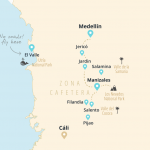

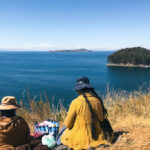
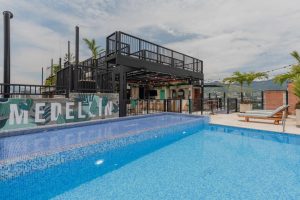
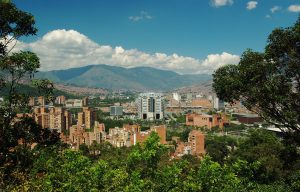
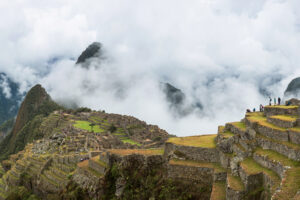
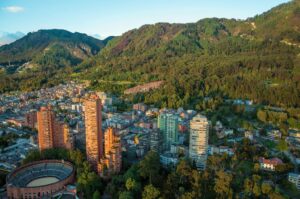



Thank you so much for this helpful guide and the fantastic tips!
Thank you so much for this helpful guide!
Great article and I agree with almost all you’ve written about Bolivia, Ecuador and Peru. Bolivia is beautiful but can be very difficult to get around as infrastructure like roads is still low grade. That said, it’s the cheapest place to visit the Amazon on a 3 day tour. The buses in Peru (especially those that run at night) are safe but not always comfy, check the company well before you book. Long bus rides are often a necessary evil as covid killed off some small domestic airlines. Ecuador was also wonderful, full of friendly people and great food. We are planning a trip to Colombia next, too bad Viva Air went bankrupt last year!! Thanks for all the great info. Salud!
Good tips. I missed the news about Viva Air, that’s a pity!
Mate if your paying people 600$ for Macchu Picchu, you got riped off. I would advise to do your research and not scare other viewers here, because you can get it for under 50 in cusco.
The cost in the article refers to the Inca Trail trek (a multi-day trip which ends at Machu Picchu), not the entrance fee to the site.
I am seriously thinking for traveling to Colombia or Bolivia to get out of California for a month. Can I reasonably get by on $500 not including air travel there and back ? I am very close to doing this but I ran across you blog and the wealth of knowledge, so I wanted to ask an expert.
Hey Anthony. To be honest I think you need quite a bit more for Colombia, like maybe double the amount. $500 could maybe be enough in Bolivia, but that’s still traveling shoestring style / budget-conscious. Would probably be easier if you had just a bit more.
Hey Jesica – no, you’re not missing something! Flights in South America are generally quite expensive. The airline industry hasn’t been deregulated the same way it’s been elsewhere and there’s few to none budget carriers. I’ve mostly travelled around SA by bus. There are some luxury sleeper bus options that are quite nice. Rome2Rio.com is a good site for checking bus info, though they don’t have everything listed. Often the best way to find bus connections is to go to the bus station of a city – there’ll often be loads of ticket booths of tons of different companies, each with their own schedules.
Thanks for the great article! My question is how did you travel between countries? I can’t seem to find any bus information that will get me from one country to another. I looked at flights and they seems really expensive. A flight from Rio to Quito is more expensive than my flight from Canada to Rio! Am I missing something?
Thanks for the tips! I’ve found most of this information to be spot on my travels through South America
I’ve just saved your guide as my husband and I are planning to travel around South America for three months. I am Brazilian but definitely need to know the neighbours better! Thank you or taking your time to put this together!
We are recently start to write about our experiences and it would be amazing to get few tips from you, check out our just born blog: https://thekcouple.com/
Thanks for the kind words Sara. Your blog is looking good! 🙂
as a hitchhiking and camping backpacker the rankings get distorted. Pretty much free in Argentina and Chile, Peru and Bolivia not as easy to hitch or camp but prices stupidly cheap…Cusco dorms with breakfast as of Nov 2017 @ 5$ a night. Brazil is challenging requiring patience and perseverance.
Hello,
At the start you say that the average monthly cost is $1000, however when you add up the daily budgets of each countries the monthly cost comes out around $1300-$2000 a month?????
Also is all travel and activities included in any of the budgets??
Thank you!
Oops, good point. I meant to write ‘at minimum’ instead of average. Yes transport and activities is included in those budgets, though keeping in mind that’s travelling in backpacker style (local buses, local food, only occasional cheap local tours, etc.). Your mileage may vary… 🙂
I noticed no mention of visa expenses in countries like Bolivia or Brazil?
Yes it’s definitely something to keep in mind. I haven’t listed these costs though as they can be totally different depending on your nationality. Americans tend to have to pay a lot for example, EU citizens usually get in for free… it all depends.
This article was BEYOND helpful! Thank you so much for all the details and time you have taken to give accurate recommendations!
Hi Marek,
I would like to take an excursion to Latín América as well next year 2018. If you have nothing against It would be great to create some team. What do you think about it, regards
This is very helpful! How did you get information about the best way to deal with money in Argentina?
Honestly the situation with Argentina changes quite a bit. I learned most info from hostel staff and other travellers as I got nearer.
good post. Keep it up
Chile is way off ( I know it is from 2016 ) but even your conversion from pesos to dollar is wrong 18.000 pesos is more like $27 than $3, unless you calculate in some other currency. And today for foreigners it is 21.000 pesos
While living here for 5 months, the cheapest tickets for Easter Island i found was $325, so ( unfortunally ) not even close to the $121 – i wished though. But your calculation for daily living when arrived seems accurate.
Hey Karina – thanks for sharing this. The automatic conversion plugin I use on this page seems to have put the decimal in the wrong place for that 18.000 pesos! I’ve corrected it to say it’s about $30 (not $3).
So helpful!!! Thanks !!
Hey Marek,
just stumbled upon your blog, and to say i am super excited is an understatement. I am considering a backpacker across south/central America or southeast Asia. I have noticed most of the comments here are by ‘gringos’ and generally most backpackers are. I am wondering if it’s safe for a negorito as well? (No disrespect intended)
Great question, though I’m not sure if or how it might affects things to be honest. Either being a gringo puts you in a kind of bubble, or being a gringo makes you way more of a target – you could picture this working both ways. I don’t know if race or racism is a factor… most Central American countries for instance have both hispanic and black populations (esp on the Atlantic coasts). I imagine that safety is more about your behaviour and whether you take unnecessary risks though. I’ll hazard a guess and say it’s safe whoever you are as long as you travel sensibly.
The Argentinian prices are way off by now, it is not a cheap country to travel anymore. Right now for example empanadas are 12-25 pesos, Big Mac Combo is 120 pesos, Restaurants start around 150 pesos, and a pizza is 160-200 pesos. 80 pesos for a pint of beer. A semi-cama bus from Cordoba to Buenos Aires is 780 pesos.
Pretty much, due to inflation whatever prices you research will be wrong by the time you arrive
The Argentinian economy is notoriously volatile. Thanks for the update – I really need to do a revision of this post!
(update) Entrance to Iguazú National Park is now 260 pesos for Argentine citizens, 400 pesos for citizens of Mercosur countries (Brazil, Uruguay, Chile, etc) and 500 pesos for all other foreign visitors. A bus from Buenos Aires to Puerto Iguazú is at around 1800 pesos. Depending on when you are travelling and when you book, airfare could be cheaper than that (specially in the low season).
Thanks for sharing this!
To anyone reading these older comments, the article has now been updated to reflect the latest situation in Argentina (late 2018) as our contributor Robert has traveled there recently. 🙂
This is really great! We’re planning a 3-4 months trip next year to South America, and were looking for a realistic budget estimation. So this will help us a lot, thanks so much !!!:) Will save your article for further analysis:)) Cheers!
Hi Marek, we traveled through Latin America for 13 months. I thought you might find my overview of South America interesting.
We spent $3881 in 275 days (over 8 months) so an average budget of $14.11 each per day.
We traveled all South American countries on a tight budget, it is very possible. The cost of travel in each country is not only dependent on price. Some examples; Chile is an expensive, but safe country that is very camping and hitchhike friendly and it is possible to hike independent. In contrast Bolivia is a cheap country, but crime can be a problem and activities are expensive. Consequently we spent more per day in Bolivia than Chile.
Safe Travels
http://stingynomads.com/south-america-travel-budget/
That’s a fantastic post and I’m sure many reading this will find it valuable! Thanks for sharing. 🙂
Hey Marek,
Great write-up, will be helpful as I leave Argentina and head to other countries down here. One thing I’ll say is I haven’t found any sort of 2 or 3 course meal in Buenos Aires that’s anywhere close to the prices you have listed. Inflation is the real deal here.
Thanks for sharing that info Ryan. This post was last updated half a year ago but things change so fast in Argentina! Will need to take a fresh look at all the prices sometime soon.
I think you got it wrong for salsa private classes in Medellin..or Cartagena…if its a studio, its about 150 000 pesos…way off bro! lol
Your post was very enlightening! I had no idea that there could be so much of a difference between the traveling costs within South America. This does change my plans a little bit!
Andrew
http://www.andestransit.com/
Thanks for the post! Were you including hostel prices in the daily budget or is that separate?
Daily budget includes food, accommodation (hostel bed or cheap shared room), transportation, and normal travel costs (like local tours etc.)
Hi thanks for such an awesome article! I am planning my own backpacking trip now and was planning on starting Oct/Nov for 6 months. Do you have any suggestions on a route in the best weather conditions (as I’d like to travel lightly)? I like taking my time and definitely want to include Machu Picchu and other adventures. My start date is flexible and I’d like to make the most of every country. Thank you!
In that case you could consider starting in Argentina or Chile as it’ll be spring around that time there. As you go north you’ll get closer to the equator which means the climate gets more consistent with less extreme seasonal differences. It’s rainy season in Peru from Jan-Apr though which isn’t the best for trekking, so you could try to get there around late Apr or May. As always though being everywhere at the ‘perfect’ time is often impossible on a bigger trip. 🙂
Thanks for sharing your reviews! Your articles are great. Cheers!
Hi there, currently travelling around Argentina. So far we have found it to be quite expensive, 16ARS to 1 Euro seems like a good deal but then the ARS prices are going up and up! For example, it is now 330ARS per person to enter Iguazu Falls from the Argentina side (boat trips are extra). It is also 20ARS per person “city tax” just to enter Puerto Iguazu City (its more like a town). As of May 2016, a bus to Puerto Iguazu from the airport is 90ARS per person, one way. It is 65ARS per person one way to the Falls by bus from Puerto Iguazu. We found Ushuaia (Beagle Channel&Tierra del Fuego) , El Calafate (Perito Moreno&Upsala Glaciers) and Buenos Aires to be the same, but what kind of a trip would it be if you didnt go to these amazing sites!:-)
‘There are certain tourist activities that you will need to take into account. For example, a popular activity is to ride a mountain bike down the so-called ‘Death Road’ near La Paz, which costs from around 300 bolivianos (USD$2030100.00) to maybe 700 bolivianos (USD$4736900.00) depending on the company and the quality of the bikes. Some of the cheaper companies use old bikes that are probably best avoided on such a demanding and dangerous downhill ride.’
I love the article, but these USD prices are surely an error. I was in Bolivia last year and I’m sure I paid a little less…
Hmm, the prices are converted automatically by a plugin, which is clearly malfunctioning at the moment. Will look into it!
Great write-up, Marek! When I visited Peru and Bolivia, the biggest expense was definitely the tours I joined. Food, accommodation and transportation weren’t overwhelmingly expensive, but some of the activities like the Inca Trail… so pricey!
Hey Marek,
I was in South America in July last year and I think you should maybe revise the map now? Argentina is getting so expensive(Inflation rate was almost 30-35% for two consecutive years).
So $$ for Brazil
And may be $$$$ for Argentina.
For Argentina it’s advisable to carry $ in cash. One can get almost double the money in grey market. I got an exchange rate of 8 pesos from the bank and 14 pesos in the grey market!
Hey Shobhit. This post is probably due for a bit of an update in general, though I’m waiting for the dust to settle a bit to see where currencies stabilise. Brazil and Colombia have become cheaper and Argentina more expensive. ‘$$$$’ seems too extreme though… you can still get a dorm bed in Buenos Aires for $12-$15, for instance. (Unless I’ve missed other costs having gone up?)
The grey/blue rate is sadly no longer applicable in Argentina as of Dec 2015. Since the government lifted currency controls the grey market rate and official rate synced up.
Hey Marek, I read about it in the news sometime ago. But I have couple of friends in BA. They said it’s still possible! Poor governance may be ?!
Transportation and food costs have gone up beyond measure. Wine is cheaper than bread though. lol
Just checked a bust trip from BA to Puerto Iguazu costs like 1400 pesos. It was 1100 pesos in July2015. But they gave me a discount of roughly 22% when I bought the ticket at counter in cash.
Anyway you have put great information here(I did use this page as reference during my travel)
Do update it soon, it’s the first in google search results. Cheers!
Argentina and Brazil probably need to switch places on that map (so to speak)! Thanks for pointing it out of course, I want the site to be as up-to-date as possible 🙂
This post now been revised fully. Thanks for your feedback! 🙂
Great job Marek,
Loved the new plugin-app where the prices are automatically converted into local currency. Cheers
Hey, I’m probably being dumb here but are you including the accommodation in the daily costs?
Yes I am! I should probably specify that more clearly. All daily costs (accommodation/transportation/food/etc.) included, but not any one-off pre-trip expenses (like flights, travel insurance, etc.)
I am in Venezuela now, I am staying at Posada guamamchi in merida, I pay 3 us everyday, in all everyday I spend 6 us. Cheapest country in the world. And very nice and beautiful people. I love venezuela
Hi Marek!
I’m planning my first female solo trip to south and central America in October.
I have 4 to 5 months and will be on backpacker budget.Where would you start and what countries would you visit and what countries in your opinion are less atractive/not too safe for girls?(I’m having in mind 2 weeks per country-with some flexibility obviously!)
Any advice,itirenary suggestions would be much appreciated.Thank you
Happy travels!
Ps.I’ll be flying from London.I’ve heard flights to Mexico,Panama are quite cheap to start with..
Hi Marek,
interesting post, me and my girlfriend have been traveling through Latin America for about 10 months, we are budget backpackers and so far our average budget is below $20 per day each, including all costs. Some of your estimates looked ok, but we found Colombia cheap and amazing, we even did rafting and paragliding on our budget! Our average budget for a month in Venezuela was $6 each per day. We are currently in Chile and because it is expensive we decided to hitchhike and Couchsurf, the people here are so friendly and amazing, we have only been here for 3 weeks, but our avg budget up to now is just below $12 per day each! Where we went, what we did and how much we spent can be seen on our blog stingynomads.com
Thanks and safe travels!
The Colombian peso plummeted in 2015. It lost 40 % of its value. So if you travel Colombia right now is a bargain if you come from a country with euros or usd. I am planning to go to Chile later this year so it is really refreshing to hear Chile can be done on a budget!
just doubling checking the prices you listed were in US dollars?
Yep, USD.
Hey Marek,
I’m currently in the process of planning my first two week backpacking adventure to South American. I’m considering Peru or Bolivia. Do you have any suggestions for routes or “must see’s” in either of these countries? Also, I’ll be going solo.
Thank you in advance.
I’d stick to the south of Peru only as this combines well with Bolivia. Most people going on this kind of trip want to see Machu Picchu and the Uyuni salt flats. To save time it might be worth taking a domestic flight from Lima (assuming this is where you land) to Cusco. From there you could go to Arequipa, lake Titicaca, La Paz, maybe Sucre and then Uyuni.
Thanks for the article. Do the daily backpacker budgets include the hostel cost?
I should have made that more clear; it’s meant to cover all daily expenses including the hostel cost.
I’m just about to leave Venezuela after two exceptionally amazing months!
I planned on 4 weeks, but just couldn’t fit everything in… and I’m still leaving having missed out on a few adventures.
Black market exchange rate is currently 760 to 800Bvs to £1.00…. 80 times the official bank rate, and almost 4 times the Venezuelan exchange bank rates…. I have spent $300 in two months. I have Couchsurfed and made great friends. I have been on fantastic tours and excursions, including paragliding for for £10.00!!! Unbelievable!
Keep posting, love the website.
Mark.
http://www.facebook.com/markboydphotography
thank you mate!
Hi Mark,
also just came from Venezuela,cheap, unique country, never had any problems, police just really annoyed us. Blog post on our trip: http://stingynomads.com/venezuela/
Thanks for sharing your great guide. I think many people will be amazed you spent just $6 a day each!
Hi Mark,
You talk about exchanging on the Black market… can you tell me a bit more about this as I am travelling to Argentina at the end of May and have no clue how to access the ‘Black Market’.
Thanks 🙂
Awesome break down! This is great and will come in handy for my 2015 RTW trip.
Thanks for sharing
Shaun
http://www.thislifeintrips.com
Make friends with locals, the blue market in Argentina isn’t quite as extraordinary as the black market in Venezuela. Speak with locals you’ll soon find out how to access the blue market rate. Make sure you’re carrying US dollars.
Hmm… Isn’t the blue market (Blue exchange rate) in Arg pretty much over, to this date? (other than, er, some 3% variance)